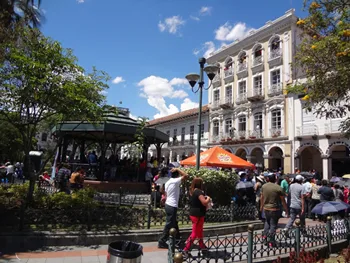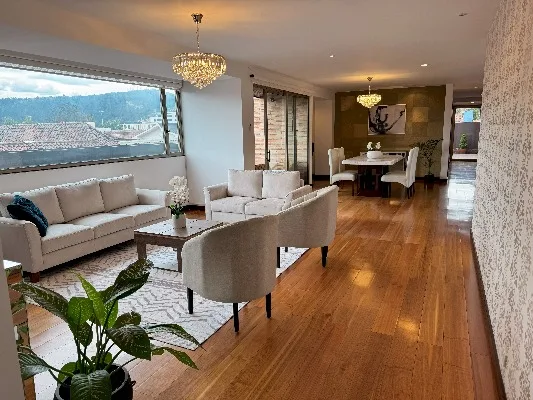City says it is following UNESCO recommendation to reduce traffic in the historic district; studies are underway to develop strategies
Reducing vehicular traffic in El Central was the primary recommendation of a UNESCO technical advisory team that visited Cuenca in August 2014. According to Mayor Marcelo Cabrera and Transportation Director Gerardo Fernández, the government is serious about fulfilling that and other recommendations intended to protect and improve the historic district.
The International Council on Historic Monuments and Sites, which provided the research for UNESCO, said that the tram, which is currently under construction, should be used to coordinate bus traffic, with the objective of reducing the number of buses in the district.
According to Fernández, the city is well into the process of developing a master transportation plan. “The objective is not only to move people around more efficiently but make the historic district more appealing to tourists and residents too,” he said.
Other UNESCO recommendations include adoption of stronger regulations to preserve historic buildings and sites, and to evaluate future property prices in the district. UNESCO says that real estate prices could rise substantially in areas close to the new tram. “This has happened in Europe where similar trams were built, and Cuenca needs to be prepared for the consequences of this,” a UNESCO report said. “We predict that the area will attract large numbers of investors,” the report continued.
Several of the historic preservation and mobility studies are being conducted by the Spanish urban planning group, Junta de Andalucía, which has worked with UNESCO in the past.
According to José Luis Cañavate, who heads the group, the focus is to protect cultural heritage but also to improve the habitability of the district. “We want to bring tourists to the district as well as residents of the greater Cuenca area,” Cañavate says. “Just as important though is to increase the number of people living in the area.”
The population of the historic district is just under 50,000, Cañavate says, down from more than 90,000 in the 1960s. “We don’t want it to return to that level but we want to create an attractive environment that will attract people, particularly young professionals.”
To create that environment, Cañavate’s team says the number of daily car and bus trips in the district, which now stands at 60,000, needs to be reduced. Attitudes of the driving public also need to change and Cañavate acknowledges that the attitude adjustment may require some driving restrictions.























